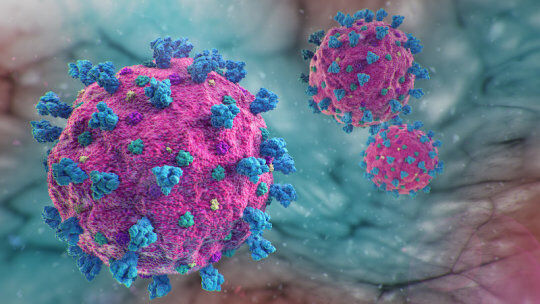State, region COVID numbers still stable so far as bars begin to open
Published 5:39 pm Monday, September 28, 2020

- COVID-19
Monday’s Louisiana Department of Health report showed the state with 236 new confirmed COVID-19 cases, 165,091 identified infections so far, an increase of 0.14 percent from Sunday’s total of 164,855.
Even with the opening of schools and the recent and imminent opening of bars across the Acadiana region, the rate of infection has not yet shown any signs of growing, although it is not dropping radically either.
The state added 6,469 new test results Monday, making the rough positivity rate for those reported infections 3.64 percent.
The state’s seven-day average of tests given as of Sept. 23, the last date reported, was 28.26 tests per 10,000 residents. The positivity rate among those tests was 4.59 percent.
In Region 4, the Sept. 23 testing rate was below the state average, at 26.74 tests per 10,000 residents. The seven-day average percent positive of those tests as of Sept. 23 was slightly above the state average, at 4.67 percent.
According to the Monday update, the number of deaths attributed to COVID-19 rose to 5,298, up from 5,283 on Sunday. That rise represents an increase of 15, or a 0.28 percent change. The average age of fatal patients is 75, the median age 77. As of Sept. 23, 182 of those deaths were still considered probable COVID-19 fatalities pending final testing. The number of probable deaths attributed to COVID-19 is updated each week on Wednesday.
In Iberia Parish, the number of cases rose to 2,932 Monday. The number of deaths remained at 89, with 31,744 tests performed in the parish. The LDH latest two-week incidence map update showed that the parish’s positive test rate dropped 28.46 percent, from 142.37 cases reported per 100,000 population on Aug. 26 to 118.41 per 100,000 between Aug. 27 and Sept. 9.
St. Martin Parish’s number of identified cases was at 2,095, with 28,220 tests performed. The LDH two-week incidence map shows that, from Aug. 27 to Sept. 9, St. Martin Parish had 117.49 cases reported per 100,000 population, a 37 percent drop from 186.49 per 100,000 in the last update. The number of deaths remained at 61.
In St. Mary Parish, the total cases rose to 1,924, after 19,198 tests. The number of COVID-19 deaths remained at 77. The LDH incidence map shows that from Aug. 26 to Sept. 9 the parish had 124.56 cases reported per 100,000 population, down 29.5 percent from 176.8 on Aug. 25.
In Lafayette Parish, the Monday case count rose to 8,969, with the number of tests rising to 136,543. The number of deaths was at 132. The LDH incidence map shows that the parish had 137.57 cases reported per 100,000 population between Aug. 27 and Sept. 9, down 16.8 percent from 163.93 on Aug. 26.
The number of cases in Jefferson Parish rose to 17,540 on Monday, compared to an increase to 12,599, in Orleans Parish. The latest data shows Orleans administered more tests, with 209,783 tests in Jefferson compared to 234,639 in Orleans.
Despite lower case numbers, the more urban Orleans Parish has seen 18 more deaths than its suburban neighbor. Orleans Parish deaths remained at 587. In Jefferson Parish, the total number of deaths was at 569. The LDH incidence map shows that from Aug. 13 to Aug. 26, Jefferson Parish had 141.92 cases reported per 100,000 population, down from 162.88 on Aug. 26. In Orleans, that number was 173.65 per 100,000, up from 125.06.
The LDH reporting of data on hospitalizations due to the disease is still running 24 hours behind. On Monday, the state reported 563 hospitalizations as of Sunday, an increase of six from 557 on Saturday. The number of patients on ventilators dropped by two, to 83 Sunday. That is down from 85 on Saturday.
The number of COVID-19 hospitalizations in Region 4, which covers Acadiana, rose by three, to 61 on Sunday. The number of patients on ventilators Sunday remained at five.
The overall intensive care bed occupancy rate in Region 4 dropped was at 72.8 percent Sunday, with 115 beds occupied and 43 ICU beds still available. The total number of ICU beds decreased to 158. That is still down from the count of active ICU beds before Hurricane Laura, which hovered above 180.
Sunday’s data also showed that hospital bed occupancy was down in Region 4, with 1,151 — 74.4 percent — of the region’s beds occupied and 397 available. The total number of reported beds decreased by six, to 1,548.
When compared by age group, the number of cases in the 18 to 29 demographic was at 36,815 Monday. It is the demographic group with the largest number of identified cases by far. The number of deaths reported in the group remained at 24.
The number of COVID-19 cases identified in the 30 to 39 age group was at 26,689, with 82 deaths, followed closely by the 40 to 49 age group, with 24,426 cases and 172 deaths, and the 50 to 59 age range with 23,914 cases, including 453 fatalities reported.
The 70 and above group case count was at 19,087. The number of deaths in that group rose to 3,607 — still the largest number of fatalities for any age group by far, more than the number of deaths in all other groups combined and more than two-thirds of the total COVID-19 attributed deaths in the state.
In the 60 to 69 age group, there were 18,703 cases reported and 956 deaths. This age group has the second-highest number of deaths, behind only the 70 and above demographic group.
The under 18 group, the smallest demographic segment, had 15,250 cases total and four reported deaths.
According to Monday’s update, labs in Louisiana have processed at least 2,288,394 COVID-19 tests so far.
The state has also started tracking possible cases, which is the number of individuals with a positive test detecting SARS-CoV-2 antigens. That number was 1,224 as of Sept. 23. According to an LDH spokesman, individuals initially identified as having a positive antigen test who are later identified as having a positive confirmatory test will be removed from the probable case count and added to the cumulative case count.
By gender, the state’s daily report shows women making up the largest part — 56 percent — of the identified COVID-19 cases in the state, with men comprising 44 percent. On the other hand, the COVID-19 deaths are predominantly among men, 52 percent to 48 percent for women.
The number of presumed recovered cases, as of Sept. 21, rose to 149,640. In order to be considered recovered, a living patient must either be out of the hospital and 14 days past a positive test result, or 21 days past a positive test date if their hospitalization status is unknown.
On Sept. 23, the weekly update of fatalities by race showed the percentage of COVID-19 deaths among White victims climbed one-sixth of a percent, while the number of Black fatalities continued to drop.
Initially, LDH reported that 70 percent of all COVID-19 deaths in the state were in the Black community. That number has since dropped to 46.3 percent as of Sept. 23, while White victims now make up 52.23 percent of all fatal cases.
The Native American/Alaskan Native and Native Hawaiian/Pacific Islander data remained at 0.08 percent each. Other races identified include Asian at 0.67 percent and Other at 0.59 percent.
The number of Black deaths is still disproportionate to the demographics of the state’s population. African Americans make up less than 40 percent of Louisiana’s populace.
That data is only reported once a week, updated on Wednesday.
The top three underlying conditions among COVID-19 deaths in the latest report were hypertension (53.15 percent), diabetes (31.76 percent), and cardiac disease (20.62 percent).
Other factors included neurological disorders (19.8 percent), chronic kidney disease (18.55 percent), obesity (17.06 percent), congestive heart failure (13.61 percent), pulmonary issues (11.53 percent), cancer (6.66 percent), and asthma (3.47 percent).




